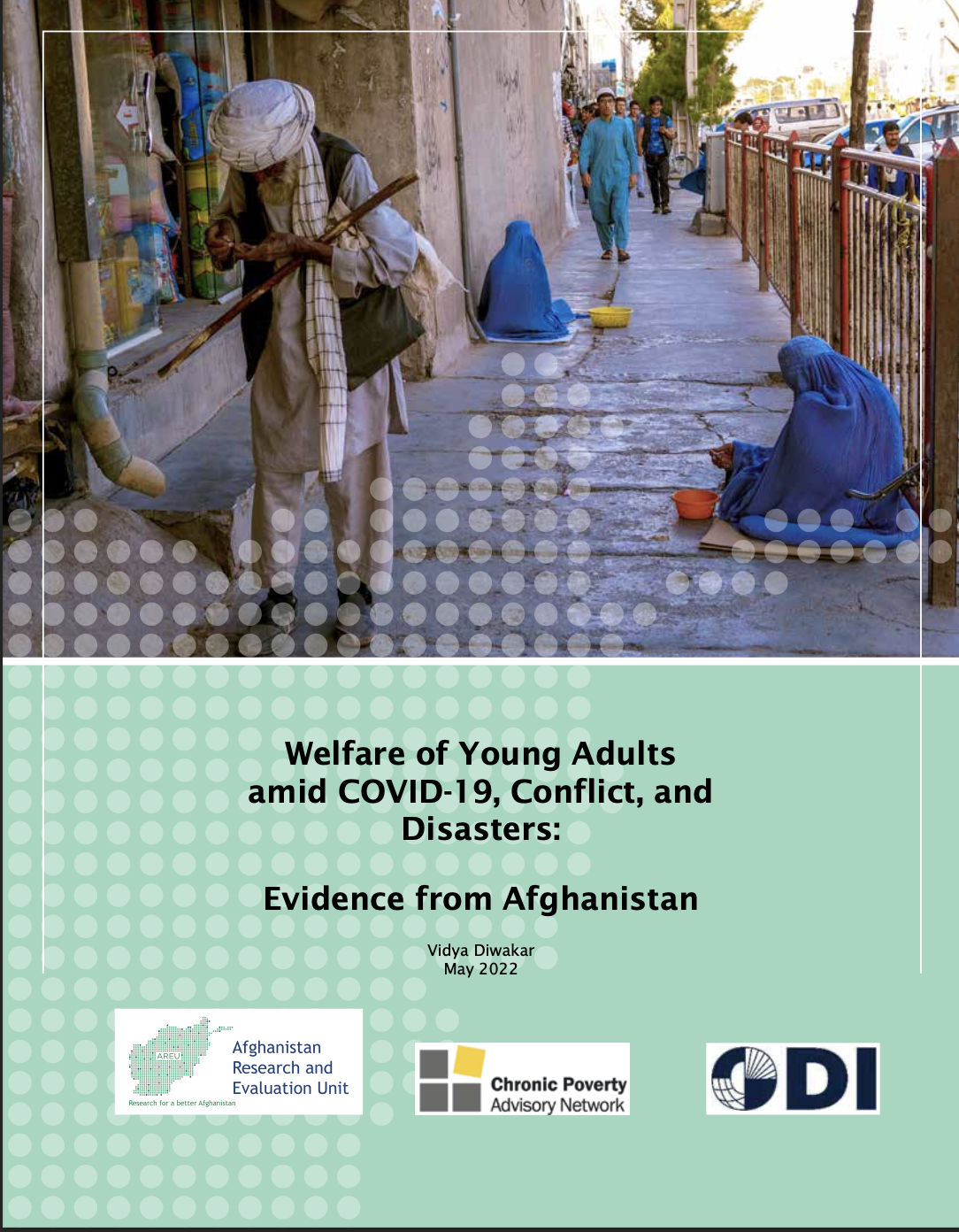
01 Jun Welfare of Young Adults Amid COVID-19, Conflict, and Disasters: Evidence from Afghanistan:
Highlights
| Authors | Dr. Vidya Diwakar |
|---|---|
| Type | Working Paper |
| Theme | Social Protection and Livelihoods |
| Language | english |
| Date of Publication | June 01, 2022 |
| Total Pages | 42 |
| Available In | English |
| Description |
Afghanistan has experienced decades of conflict-related insecurity and disasters. COVID-19 is one of the latest developments that further threaten the livelihoods and welfare of the Afghan population. The poverty rate rose from 38.2% in 2011 to 54.5% in 2016. Just before the pandemic, it was estimated to be 43.7% in the fall of 2019 before rising again to 51.0% during the onset of COVID-19 in Spring 2020. A similar share (49.4%) of the population is multidimensionally poor, which in Afghanistan is defined according to dimensions around health, education, living standards, work, and presence of negative shocks. Regarding the latter, the pandemic coincided with increased political instability, prolonged drought as well as a series of flash floods, and a weakened economy, all of which threaten to derail progress on poverty reduction. This paper draws on the Income, Expenditure, and Labour Force Survey (IE&LFS) 2019-20 to quantitatively analyse poverty and welfare loss in Afghanistan before and during COVID-19, alongside other shocks and stressors. |


